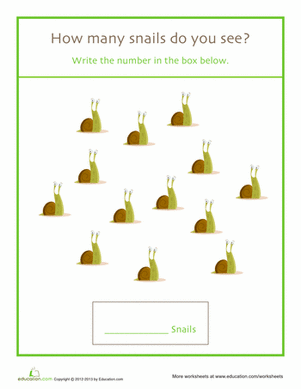Science project
Snail Slime
Are snails sticky and icky, or does all that slime have super powers? In this experiment, you’ll discover the power of the tiny snail.
Problem:
How powerful is a snail’s slime?
Materials:
- Snail
- Sand
- Pieces of leaf
- Dime
- Piece of clear plastic
- Lettuce
- Notebook and pencil
Procedure:
- Get ready for some slimy fun! Find a garden snail and set up your experiment outdoors so that the snail feels comfortable in its natural environment.
- Create a hypothesis, your best guess about what is going to happen. What will happen if you allow the snail to move across the piece of clear plastic? If the plastic gets slimy, do you think that objects will stick to it?
- Set your snail free at one end of the clear plastic, and wait. Snails aren’t known to be fast walkers, so you might have some time on your hands. If the snail looks like it’s moving off of the plastic, gently move it back on. If the snail hides in its shell, that’s all right – it’s feeling shy. Leave it alone for a few minutes or gently spray it with some rainwater and it will feel better.
- After the snail has completed its walk to the other end, let it go. Give it a piece of lettuce to munch on as a thank you.
- Now, look at what the snail has left behind. You should see a thin, clear layer of slime. Now you can explore snail power!
- First, place a small piece of leaf on a clean surface. Press the piece of slimy plastic onto the leaf, and move it up into the air again. What happens?
- Next, try the same thing with the dime. What happens?
- Finally, place some sand on the surface and press the plastic onto that. What happens? As you do each part of the experiment, make notes in your notebook or get an adult to help you do this. If you wish, you can use a stopwatch to see how long certain things stick to the slime.
- When the experiment’s done, make sure to wash your hands!
Results:
Snail slime is pretty sticky! If your paper is slimy enough, you should be able to pick up small pieces of leaf. If it’s really slimy, you may even be able to pick up a dime for a short time. Sand will stick to the slime trail on the paper, making it look like a sandy pathway.
Why?
Snails are amazing figure skaters. They move their long, muscular foot along the ground, sliding on a rink that they make with their slime. This allows the snail to move across bumpy places that might otherwise hurt its sensitive foot.
So what is snail slime made of? Slime is made of sugars and protein, and it’s fairly similar to the goopy mucus that comes out of your nose when you’re sick. One difference is the way the snails use their slime: they use it to move. Snail slime a slippery liquid when it’s under the snail, but when the snail has moved on, the slime left behind starts to become stickier. These two different properties allow the snail to glide over rough terrain and climb up the sides of plants and trees without falling off.
When you experimented with the slime, you should have found that it was pretty sticky. Leaves, sand, and even heavier things like dimes can stick to the slime. If you’d like to lift heavier things with snail slime, you probably need a large amount of slime. Snails make more slime when it rains, and their slime gets bigger in water.
Snail slime is so amazing that it’s even been used in beauty creams. Now that’s a sticky situation!
Education.com provides the Science Fair Project Ideas for informational purposes only. Education.com does not make any guarantee or representation regarding the Science Fair Project Ideas and is not responsible or liable for any loss or damage, directly or indirectly, caused by your use of such information. By accessing the Science Fair Project Ideas, you waive and renounce any claims against Education.com that arise thereof. In addition, your access to Education.com's website and Science Fair Project Ideas is covered by Education.com's Privacy Policy and site Terms of Use, which include limitations on Education.com's liability.
Warning is hereby given that not all Project Ideas are appropriate for all individuals or in all circumstances. Implementation of any Science Project Idea should be undertaken only in appropriate settings and with appropriate parental or other supervision. Reading and following the safety precautions of all materials used in a project is the sole responsibility of each individual. For further information, consult your state's handbook of Science Safety.











